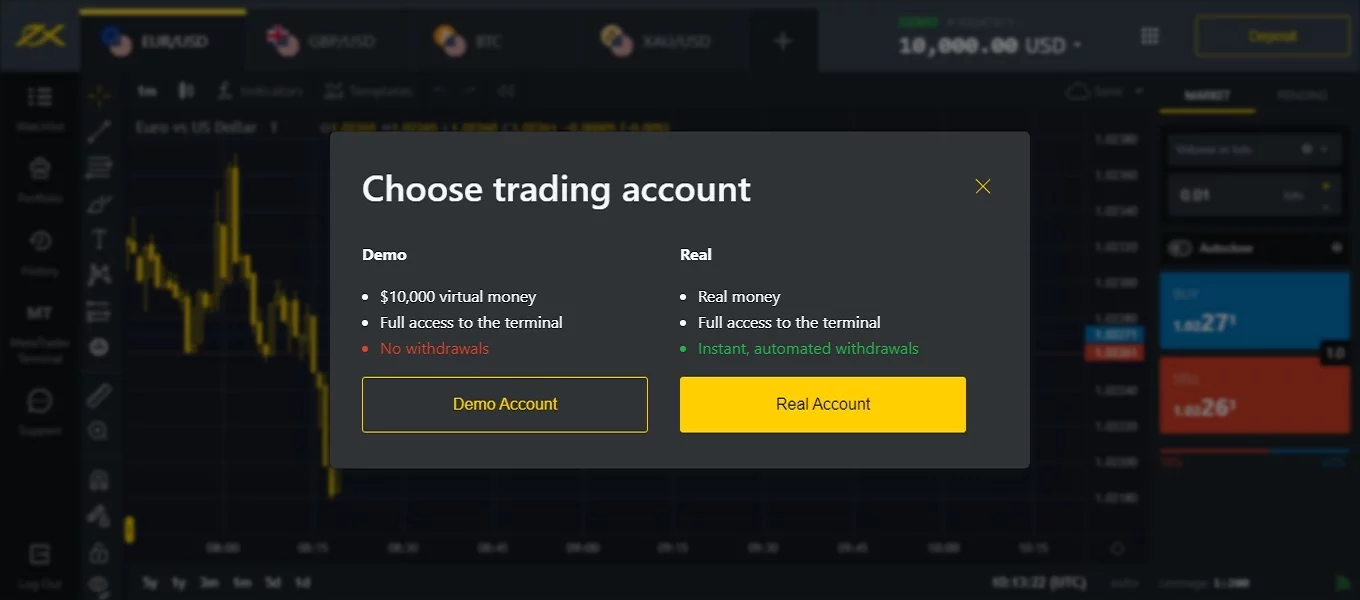
Cryptocurrency investing can be incredibly exciting—and volatile. As markets experience wild price swings, it’s easy to get caught up in the hype of a booming token or the panic of a sharp dip. That’s where diversification comes in. Building a diversified crypto portfolio can help you manage risk and maximize your potential gains over time. In this article, I’ll walk you through the steps of creating a balanced portfolio, sharing a few personal tips along the way that I’ve picked up from years of trading in the crypto space.

Understanding the Basics of Diversification
What Is Diversification?
Diversification is a strategy that involves spreading your investments across different assets to reduce risk. In the context of cryptocurrency, this means not putting all your eggs in one basket—or in this case, one token. Instead of betting everything on Bitcoin or Ethereum, you’ll want to hold a mix of different coins, each serving a different purpose in your portfolio.
When I first started investing in crypto, I made the rookie mistake of putting all my funds into a single altcoin that had been trending on Twitter. I didn’t consider the risk of having my entire portfolio tied to one volatile asset, and sure enough, that altcoin took a nosedive. Diversification would’ve helped me soften the blow.
Benefits of a Diversified Portfolio
A well-diversified portfolio reduces the impact of a downturn in any one asset. For example, if Bitcoin drops significantly but you also hold stablecoins and altcoins in other sectors, your overall losses may be minimized. This strategy also opens up potential for better long-term returns by giving you exposure to high-growth assets while balancing them with more stable ones.
Set Clear Investment Goals
Define Your Financial Goals
Before you start picking which tokens to invest in, take a step back and consider your financial goals. Are you looking for short-term gains or long-term growth? Are you willing to take on high risks, or would you prefer a more conservative approach? Understanding these factors will help shape your portfolio.
For me, I’ve always been a long-term investor. My primary goal is to build wealth gradually, so I tend to allocate more toward established cryptocurrencies like Bitcoin and Ethereum, while still exploring growth opportunities in newer projects. If you’re someone with a higher risk tolerance and a desire for faster returns, you might prioritize different assets.
Establish a Timeline
Knowing your investment timeline is crucial. If you’re planning to hold your crypto for years, you can weather the ups and downs of the market better than someone looking for quick profits. Having a clear timeline will help you decide which assets to hold and when to rebalance your portfolio, which we’ll discuss later.
Allocate Across Different Asset Classes
Cryptocurrency Types to Include
There are several types of cryptocurrencies you should consider including in your portfolio, each playing a unique role:
1. Blue-Chip Cryptocurrencies
These are well-established coins with large market capitalizations, like Bitcoin (BTC/USDT) and Ethereum (ETH/USDT). They are the pillars of the crypto space, and while they may not offer the explosive gains of newer tokens, they bring relative stability. Personally, I allocate around 50% of my portfolio to these coins, as they serve as a foundation that I can rely on.
2. Growth Potential Altcoins
These are smaller market-cap coins with high growth potential. Examples include Solana (SOL) or Polkadot (DOT). These projects are riskier but can offer significant returns if they succeed. Allocating 20-30% of your portfolio to growth altcoins can give you exposure to innovation in the crypto world.
3. Stablecoins
Holding stablecoins like USDT or USDC can act as a hedge against volatility. They provide liquidity and give you the flexibility to quickly take advantage of buying opportunities. I typically keep around 10% of my portfolio in stablecoins so I can jump on price dips without having to sell other assets.
4. DeFi and Web3 Projects
Decentralized finance (DeFi) and Web3 are growing rapidly. Including tokens like Uniswap (UNI) or Aave (AAVE) in your portfolio can give you exposure to this evolving sector. These are higher-risk investments but can pay off significantly as the space develops.
5. Meme Coins and Speculative Tokens
Meme coins like Dogecoin (DOGE) and Shiba Inu (SHIB) are highly speculative but can yield big rewards in short bursts. However, I recommend keeping these to 5-10% of your portfolio at most, given their unpredictability.
Balancing the Allocation
The key to successful diversification is balance. You don’t want to be too heavily invested in high-risk tokens, but you also don’t want to miss out on potential growth by being overly conservative. A typical diversified portfolio might look like this:
- 50% blue-chip cryptocurrencies
- 20-30% growth altcoins
- 10-15% stablecoins
- 5-10% speculative tokens
Of course, this allocation depends on your individual goals and risk tolerance, but this balance provides a good starting point.
Sector-Based Diversification
Different Sectors Within the Crypto Space
Cryptocurrency isn’t just about digital money; it’s an ecosystem with various sectors, each offering different opportunities:
- Layer-1 Platforms: These are the blockchains themselves, like Ethereum or Solana.
- DeFi: Tokens that provide decentralized financial services, like lending or trading.
- NFT and Metaverse Projects: Focused on digital ownership and virtual worlds.
- Oracles and Infrastructure: Tools that connect blockchains to real-world data, like Chainlink (LINK).
- Privacy Coins: Cryptocurrencies like Monero (XMR) that emphasize anonymity.
Why Sector-Based Diversification is Important
Sector-based diversification reduces your exposure to specific trends. For example, if the NFT market cools off, holding DeFi and Layer-1 platform tokens will keep your portfolio balanced. When I started diversifying into different sectors, it helped me smooth out the ups and downs of individual trends.
Geographic and Regulatory Diversification
Investing in Global Projects
It’s wise to have exposure to projects from different regions. For instance, Asian markets often have unique projects that may not get as much attention in Western countries, but they can be big movers. Don’t limit yourself to just U.S.- or European-based tokens—crypto is a global game.
Regulatory Risk Management
Regulation is one of the biggest uncertainties in crypto. Different countries have different approaches to crypto regulation, and this can dramatically affect the market. By investing in global projects, you spread the risk of any one country implementing unfavorable regulations.
Rebalance Your Portfolio Regularly
Why Rebalancing is Key
The crypto market moves quickly, and your portfolio will drift from your initial allocation over time. Rebalancing allows you to lock in profits from high-performers and redistribute them to underperformers. This keeps your portfolio in line with your original strategy.
How Often to Rebalance
Rebalancing frequency depends on market conditions and your personal preferences. Some traders rebalance monthly, while others do it quarterly or even annually. Personally, I check my portfolio every quarter, but I rebalance more often during volatile market conditions.
Stay Informed and Adapt to Market Changes
Continuous Education
The crypto world is constantly evolving, with new projects, regulations, and market conditions. To stay ahead, make it a habit to read crypto news, follow market analysts, and participate in communities like Reddit or Telegram. I’ve found that being part of a community can often give you insights you wouldn’t find elsewhere.
Adapting to Changing Market Conditions
Whether it’s a bull market or a bear market, be ready to adjust your strategy. During bull runs, you may want to take profits on high-risk assets, while in bear markets, you might want to focus on accumulating more stable assets like Bitcoin.
Risks and Challenges of Diversifying
Over-Diversification Risk
While diversification is important, too much diversification can dilute your potential gains. Holding too many assets can make it difficult to track and manage your portfolio effectively. Aim for a balance that gives you exposure without spreading yourself too thin.
Market Correlation
It’s also important to recognize that even in a diversified portfolio, many cryptocurrencies may still be correlated. For example, when Bitcoin drops, the rest of the market often follows. This is why holding non-correlated assets, like stablecoins, is essential.
Conclusion
Building a diversified crypto portfolio is about more than just reducing risk—it’s about maximizing your potential for long-term success. By spreading your investments across different types of cryptocurrencies, sectors, and regions, you can manage volatility and increase your chances of achieving your financial goals. Just remember, no strategy eliminates risk entirely, but with a disciplined approach, you can ride out the wild swings of the crypto market. Happy investing!




